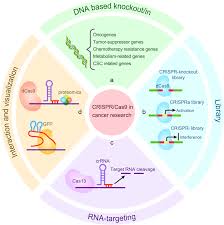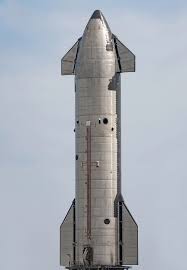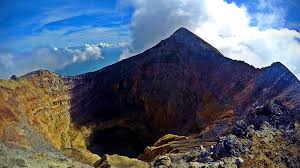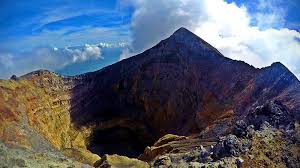Today’s Current Affairs: 13th June 2024 for UPSC IAS exams, State PSC exams, SSC CGL, State SSC, RRB, Railways, Banking Exam & IBPS, etc
Table of Contents
CRISPR/Cas9 : Study

Researchers recently used CRISPR/Cas9 to alter photosynthesis for the first time.
- CRISPR, short for Clustered Regularly Interspaced Short Palindromic Repeats, is a gene-editing technology that can be used to alter the genetic sequence of a specific gene by removing, adding, or altering sections of the DNA sequence.
- It makes it possible to correct errors in the genome and turn on or off genes in cells and organisms quickly, cheaply, and with relative ease.
- Some bacteria have a similar, built-in gene editing system to the CRISPR-Cas9 system that they use to respond to invading pathogens like viruses, much like an immune system.
- Using CRISPR, the bacteria snip out parts of the virus DNA and keep a bit of it behind to help them recognise and defend against the virus next time it attacks.
- Researchers adapted this immune defense system to edit DNA.
- The CRISPR-Cas9 system consists of two key molecules that introduce a change (mutation) into the DNA. These are:
- An enzyme called Cas9, acts as a pair of ‘molecular scissors’ that can cut the two strands of DNA, at a specific location in the genome so that bits of DNA can then be added or removed.
- A piece of RNA called guide RNA (gRNA), consists of a small piece of pre-designed RNA sequence (about 20 bases long) located within a longer RNA scaffold.
- The scaffold part binds to DNA and the pre-designed sequence ‘guides’ Cas9 to the right part of the genome.
- This makes sure that the Cas9 enzyme cuts at the right point in the genome.
- The guide RNA is designed to find and bind to a specific sequence in the DNA.
- Cas9 follows the guide RNA to the same location in the DNA sequence and makes a cut across both strands of the DNA.
- Once the DNA is cut, researchers use the cell’s own DNA repair machinery to add or delete pieces of genetic material, or to make changes to the DNA by replacing an existing segment with a customized DNA sequence.
- CRISPR-Cas9 has a lot of potential as a tool for treating a range of medical conditions that have a genetic component, including cancer, hepatitis B, or even high cholesterol.
Nitrous Oxide (N2O) Emissions:

Planet-warming nitrous oxide (N2O) emissions grew by 40 percent between 1980 and 2020, according to a new report published by the Global Carbon Project.
- Nitrous Oxide (N2O) commonly known as laughing gas or happy gas, is a colorless, odorless, and non-flammable
- While nitrous oxide is not flammable, it will support combustion to the same extent as oxygen.
- It leads to a state of euphoria, explaining its nickname, ‘laughing gas.’
- It is soluble in water. Its vapors are heavier than air.
- It is commonly used by dentists and medical professionals to sedate patients undergoing minor medical procedures.
- The gas is also used as a propellant in food aerosols.
- It is used in the automotive industry to enhance engine performance.
Highlights of the Report:
- Nitrous Oxide (N2O) is the third most significant greenhouse gas after carbon dioxide and methane and is 273 times more potent than CO2 over 100 years.
- The increase in greenhouse gases has already raised the Earth’s average surface temperature by 1.15 degrees Celsius compared to the 1850-1900 average.
- Anthropogenic nitrous oxide emissions contribute to about 0.1 degrees of this warming.
Nitrous Oxide (N2O) emissions grew by 40 percent between 1980 and 2020, with China being the largest emitter, followed by India and the US. - The top 10 emitters are China, India, the USA, Brazil, Russia, Pakistan, Australia, Indonesia, Turkey, and Canada.
- The biggest human sources of N₂O are agriculture, industry, and the burning of forests or agricultural waste.
74 percent of the nitrous oxide emissions over the last decade originated from agricultural practices, specifically the use of nitrogen fertilizers and animal manure. - In 2022, the concentration of nitrous oxide in the atmosphere reached 336 parts per billion, 25 percent higher than in 1850-1900, significantly surpassing the predictions of the Intergovernmental Panel on Climate Change.
Sarod maestro Pandit Rajeev Taranath : Passed Away

Sarod maestro Pandit Rajeev Taranath, who was undergoing treatment at a private hospital in Mysuru, passed away recently.
- Sarod is a stringed instrument in the lute family and one of the most popular instruments in Hindustani classical music.
- It is often accompanied by the tabla (drums) and tambura (drone lute).
- It is an adaptation of the Afghan rabab, which arrived in India during the 16th century.
- The modern form of the instrument was designed in the 19th century.
- The sarod is 100 cm long and has a body made from hollow teak, sagwan, or tun wood.
- High-quality instruments have a body, neck, and peg box made from a single piece of wood.
- The resonator has a stretched membrane (usually goatskin) and a bridge made from horn where the strings rest.
- The bridge is very thin, like that of a violin.
- The melody strings are stretched across the bridge, and the sympathetic strings run through holes drilled into the bridge.
- The strings were traditionally made from gut or silk, but today are usually made from steel or bronze.
- The neck of the instrument does not have a fretboard, but rather a polished, steel plate.
- One who plays the sarod is called a sarodiya, and the word sarod is Persian for song or melody.
- The seated player holds the instrument across his lap.
- The strings of the sarod are plucked using a triangle-shaped plectrum called a jawa, usually made from coconut shell, ebony, or horn., while the fingernails of the left hand press the strings.
- Two prominent Indian schools of sarod playing are those of Ghulam Ali Khan and Allauddin Khan, each with its own playing style, type of sarod (e.g., size, shape, and number of strings vary), and tuning system.
Notified Disasters:

The ongoing spell of extreme heat in many parts of the country has once again reopened discussions on the inclusion of heatwaves as one of the notified disasters under the Disaster Management (DM) Act, 2005.
- The Disaster Management Act, 2005, defines a disaster as a “catastrophe, mishap, calamity or grave occurrence” arising from natural or man-made causes that results in substantial loss of life, destruction of property, or damage to the environment.
- The Act includes 12 categories of notified disasters, which are: Cyclone, Drought, Earthquake, Fire, Flood, Tsunami, Hailstorm, Landslide, Avalanche, Cloudburst, Pest attack, Frost and cold waves
- These notified disasters are eligible for relief assistance under the State Disaster Response Fund (SDRF) and National Disaster Response Fund (NDRF).
- The SDRF is primarily used for immediate relief to victims of notified disasters, while the NDRF supplements the SDRF in cases of severe disasters where funds are insufficient.
- However, heatwaves are not currently included as a notified disaster under the Act.
- Although heatwaves are a significant concern in India, particularly in certain regions, the Finance Commission has not been convinced to expand the list of notified disasters.
- States can use up to 10% of their SDRF allocation for local disasters, including heatwaves, which some states have done.
International Organization Of Migration (IOM) : Record

At least 49 migrants died and 140 others were missing after their boat capsized off the coast of Yemen, the U.N. migration agency said on June 11.
- International Organization of Migration (IOM) is an intergovernmental organization that provides services and advice concerning migration to governments and migrants, including internally displaced persons, refugees and migrant workers.
- Establishment: IOM was established in 1951.
- Headquarters: Geneva, Switzerland.
- Member States: IOM has 175 member states and 8 observer states.
- Mandate: To promote humane and orderly migration for the benefit of all, through providing services and advice to governments and migrants.
- Publications: World Migration Report, Migration Health Annual Report.
- IOM works to maximize the benefits of migration for both the home and host countries, as well as for migrants themselves.
- The organization provides health services and support to migrants and displaced populations.
- IOM responds to humanitarian crises by providing emergency relief and post-crisis recovery programs, such as transportation assistance, temporary shelter, and rebuilding infrastructure.
- The organization actively combats human trafficking through prevention, protection, and prosecution initiatives, providing support to victims of trafficking.
Starship : SpaceX’s

SpaceX’s Starship rocket accomplished its first fully successful test flight last week, with both its booster and spacecraft making a gentle splashdown after an hour-long sub-orbital space flight.
- SpaceX’s Starship is an ambitious spacecraft designed to be fully reusable for missions to various destinations in space, including Mars.
- It is part of a two-stage-to-orbit launch system composed of the Super Heavy booster and the Starship spacecraft itself:
- Super Heavy Booster: The first stage, responsible for lifting Starship out of Earth’s atmosphere.
- Starship Spacecraft: The second stage, designed for space travel, including carrying crew and cargo.
- Both stages are designed to be fully reusable, aiming to significantly reduce the cost of space travel.
- Capacity: Crew: Can carry up to 100 passengers.
- Cargo: Large payload capacity, with different configurations for various missions.
- Engines: Powered by Raptor engines, which use liquid methane and liquid oxygen (Methalox) as propellants.
Enterobacter bugandensis:

Scientists from the Indian Institute of Technology Madras (IIT-M) and NASA’s Jet Propulsion Laboratory (JPL) have carried out a collaborative study of the behaviour of multi-drug resistant pathogens aboard the International Space Station (ISS).
- Enterobacter Bugandensis is a relatively new species within the Enterobacter genus.
- It was first described in 2013, after being isolated from cases of bloodstream infections in Uganda.
- It is a Gram-negative, rod-shaped bacterium.
- Like other Enterobacter species, E. bugandensis is typically found in various environments, including soil, water, and the gastrointestinal tracts of animals and humans.
- It can cause a range of infections, primarily in immunocompromised These include bloodstream infections, respiratory infections, urinary tract infections, and wound infections.
- It has shown resistance to multiple antibiotics, which makes treatment challenging.
- The mechanisms of resistance can include beta-lactamase production, efflux pumps, and mutations that reduce drug uptake.
Maitri Setu:

The Maitri Setu, also known as the India-Bangladesh friendship bridge, is set to open by September, connecting India’s landlocked Northeast to the Bay of Bengal.
- The bridge is 1.9 kilometres long and connects Sabroom in Tripura with Ramgarh in Bangladesh.
- Maitri Setu is constructed over the Feni River, which acts as a boundary between India (in Tripura) and Bangladesh.
- The name ‘Maitri Setu’ signifies the strengthening of bilateral relations and friendly ties between India and Bangladesh.
- It is a pre-stressed concrete bridge with a single-span structure that facilitates smooth traffic and cargo flow.
- The construction of the bridge has been supervised by the National Highways and Infrastructure Development Corporation Ltd. (NHIDCL).
- NHIDCL is a government-owned company established in 2014 for the development & maintenance of National Highways & Strategic Roads of India.
- It operates as a nodal agency of the Ministry of Road Transport and Highways (MoRTH).
Authorised Economic Operators Programme:

The gem and jewellery sector has been granted Authorised Economic Operator (AEO) status by the Ministry of Finance, easing export-import processes with shorter cargo release times and reduced bank guarantees.
Authorised Economic Operators Programme:
- The Authorised Economic Operator (AEO) programme is a global initiative launched in 2007 under the World Customs Organization’s (WCO) SAFE Framework of Standards.
- It serves a dual purpose
- Enhancing International Supply Chain Security: The AEO programme aims to strengthen security measures throughout the international movement of goods, minimising risks associated with smuggling and counterfeiting.
- Facilitating Trade Flow: By recognising businesses that meet stringent security standards, the programme aims to expedite customs clearance processes, reducing delays and costs for legitimate traders.
- Under this, an entity engaged in international trade is approved by WCO as compliant with supply chain security standards and granted AEO status.
- An entity with an AEO status is considered a ‘secure’ trader and a reliable trading partner.
- Benefits of AEO status include expedited clearance times, fewer examinations, and improved security and communication between supply chain partners.
- AEO is a voluntary programme.
- India has also launched pilot project in 2011, the Indian AEO Programme that leverages the security standards established by the WCO SAFE Framework.
- This program offers a three-tiered system for both exporters and importers, allowing companies to progressively demonstrate their commitment to secure trade practices.
Nano-Fertilizer Plant At Kakinada:

Coromandel International (an agriculture solutions provider) has opened a nano-fertiliser plant at its Kakinada complex in Andhra Pradesh.
- The nano fertilisers (such as Nano DAP and Nano urea) ensure optimal nutrient delivery and absorption by the plants, potentially replacing conventional fertilisers and increasing crop yield.
- Nano fertilisers are highly efficient types of fertilisers that provide nutrients like nitrogen to crops through fine granules.
- They are made up of nanoparticles, which are particles that are less than 100 nanometers in size.
- This small size allows the nanoparticles to penetrate plant cells more easily and deliver nutrients directly to the plant.
Mount Kanlao :

A volcanic eruption at Mount Kanlaon in the Philippines led to rivers of cold lava, or lahar.
- Cold lava, or “lahar,” is a hazardous flow of volcanic material, debris, and water that descends rapidly from volcanoes, resembling a fast-moving landslide rather than molten lava.
- This dense mixture forms when water interacts with volcanic ash and debris on a volcano’s slopes, creating a river-like flow that can be more destructive than molten lava due to its speed and force.
- The term “cold lava” is misleading, as it remains hot internally but appears and behaves like wet concrete.
- Driven by gravity and the volume of displaced material, lahars can travel far from the volcano’s summit, picking up additional debris and increasing in volume and destructive power.
Apple Intelligence:

Apple introduced “Apple Intelligence,” a generative AI system integrated into iPhones, iPads, and Macs via iOS 18, iPadOS 18, and macOS Sequoia.
- Apple Intelligence combines generative AI with personal context to provide personalized, context-aware responses, enhancing user experience while prioritizing privacy through on-device processing and Private Cloud Compute.
- Key features include:
- Writing Tools
- Email Management
- Creative Tools
- Enhanced Siri




